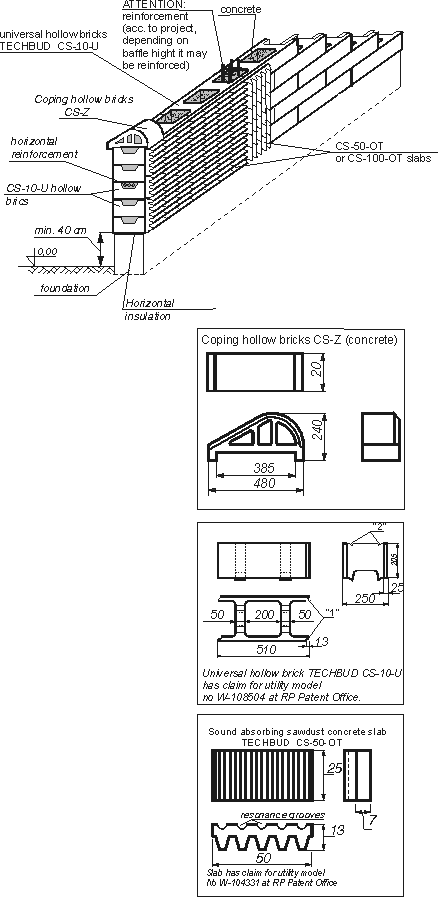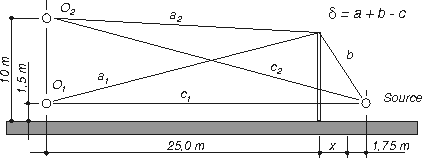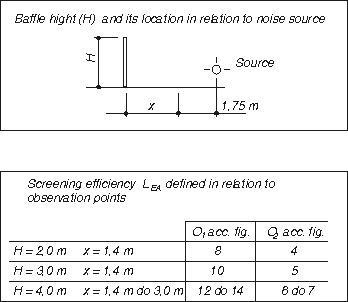- Acoustic baffle TYPE II
6.1. General characteristics
Acoustic baffle type II is built from universal hollow
bricks TECHBUD CS-10-U on concrete or reinforced concrete foundation (acc. to
statistical calculation) covered with horizontal insulation. Building of a load-bearing
wall consist in positioning universal hollow bricks TECHBUD CS-10-U one on another
without mortar.
Holes of the hollow brocks are filled with concrete. Depending on the hight of the
wall and its required carrying ability either vertical or horizontal reinforcement
is used.
After building the wall sound absorbing sawdust concrete panels TECHBUD CS-50-OT are
pinned on it, facing the sound source. After intalling the panel set baffle surface
is painted twice with a paint gun (polymer-mineral paint) acc. to appropiate
graphical design. Coping hollow bricks CS-Z are fixed with cement mortar on the top
of baffle screens.
 |
|
Fig. 1. Acoustic baffle TYPE II building method
|
6.2. Acoustic characteristics
Baffle acoustic insulation as tested amounts to:
Rav
= 37dB
 |
|
Fig. 2. Location of observation points O1 and O2 in
relation to
which comparative evaluation of baffle efficiency was conducted.
|
Acoustic efficiency is presented in the table below:
